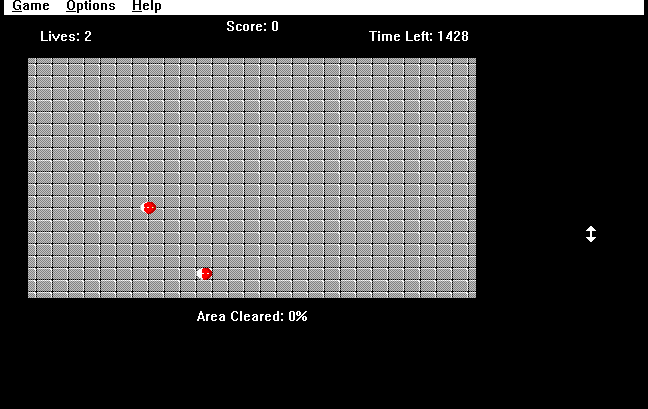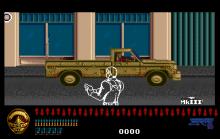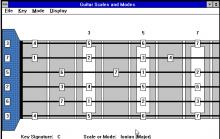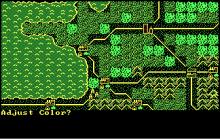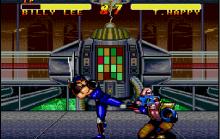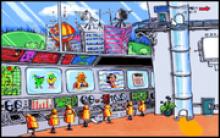JezzBall
How to play JezzBall
Each game uses different controls, Games can a combination of mouse,keyboard and Joystick.
JezzBall Description
JezzBall’s Addictive Puzzle Gameplay—What You Need to Know!
JezzBall is a classic arcade puzzle game that first gained popularity in the early 1990s. Released as part of the Microsoft Entertainment Pack in 1992, this game quickly became a favorite among PC users for its simple yet addictive gameplay. Designed by Dima Pavlovsky, JezzBall challenges players to capture sections of a rectangular space by creating walls while avoiding bouncing balls, known as Jezzballs.
Over the years, JezzBall has maintained a loyal fan base and inspired numerous adaptations and remakes. In this article, we’ll explore the game’s mechanics, development history, strategies for success, and its enduring legacy in the gaming world.
JezzBall Game Overview

JezzBall is an arcade-style puzzle game that requires players to capture portions of a rectangular area by drawing vertical or horizontal walls. The main objective is to enclose more than 75% of the area without allowing the Jezzballs to interrupt the wall construction. The gameplay bears a resemblance to the earlier arcade game Qix, which was released in 1981, though JezzBall introduces its own unique twist by adding multiple bouncing balls that increase in number as the levels progress.
Development and Release
JezzBall was developed by Dima Pavlovsky and was released in 1992 as part of the Microsoft Entertainment Pack, a collection of games that were bundled with early versions of the Windows operating system. The game’s name is a clever play on the word "Jezebel," adding a distinct flair to its branding. Upon its release, JezzBall quickly became a hit among PC gamers, thanks in part to its inclusion in a software package that was readily available on millions of computers worldwide.
JezzBall Gameplay Mechanics

The gameplay in JezzBall is straightforward but challenging. Players start each level with a set number of lives, corresponding to the number of Jezzballs present on the screen. To progress, players must draw walls to capture more than 75% of the area. However, if a Jezzball collides with a wall while it is being drawn, the player loses a life, and the wall construction is halted. As players advance through the levels, the number of Jezzballs increases, making it increasingly difficult to capture the required area without losing lives.
Strategies for Success
Succeeding in JezzBall requires strategic planning and precise timing. Here are some tips:
- Plan Your Moves: Before drawing a wall, observe the movement patterns of the Jezzballs. Planning your moves carefully can prevent unnecessary losses of lives.
- Divide and Conquer: Start by creating small, manageable sections rather than attempting to capture large areas at once. This reduces the risk of a Jezzball disrupting your wall construction.
- Corner Trapping: Try to trap Jezzballs in the corners or edges of the screen. This strategy limits their movement and makes it easier to capture larger portions of the area.
- Patience is Key: Don’t rush your moves. Waiting for the right moment to draw a wall can make all the difference in successfully completing a level.
JezzBall Modern Adaptations

JezzBall’s simple yet compelling gameplay has ensured its place in the pantheon of classic arcade games. Over the years, it has inspired numerous adaptations and remakes, including titles like "Jezzball Galaxy" and "JezzBall Classic." These modern versions aim to retain the essence of the original game while offering updated graphics and enhanced gameplay mechanics to appeal to contemporary gamers. The enduring popularity of JezzBall underscores its significance as a timeless puzzle game that continues to entertain players across generations.
Reception and Cultural Impact
Since its release, JezzBall has garnered a lasting reputation as one of the most addictive and challenging puzzle games of its time. Its straightforward mechanics combined with escalating difficulty levels have made it a beloved title for both casual and hardcore gamers. Discussions about JezzBall often revolve around its balance, graphics, and the nostalgia it evokes for the early days of PC gaming. Even today, JezzBall continues to be referenced in conversations about classic games, and its influence can be seen in various puzzle games that followed.
JezzBall is a classic example of arcade puzzle game design that blends strategic thinking with engaging gameplay. Its enduring appeal, evidenced by modern remakes and a dedicated fan base, speaks to its status as a timeless game. Whether you’re revisiting JezzBall for a dose of nostalgia or discovering it for the first time, this iconic game offers a challenging and enjoyable experience that remains relevant to this day.
Have fun playing Jezzball here on Classic Reload. JezzBall borrows certain gameplay rules from Qix and forces players to divide and rule the 2D playfield by carving out slivers to 25% (or less) of their original size. The complex factor here is the ball. The ball bounces off the edge of a continuous playfield at each level. By the way, marking a player is very deadly, but you can only see it concretely while reducing the playfield by marking areas that are no longer in use.

JezzBall - additional information







